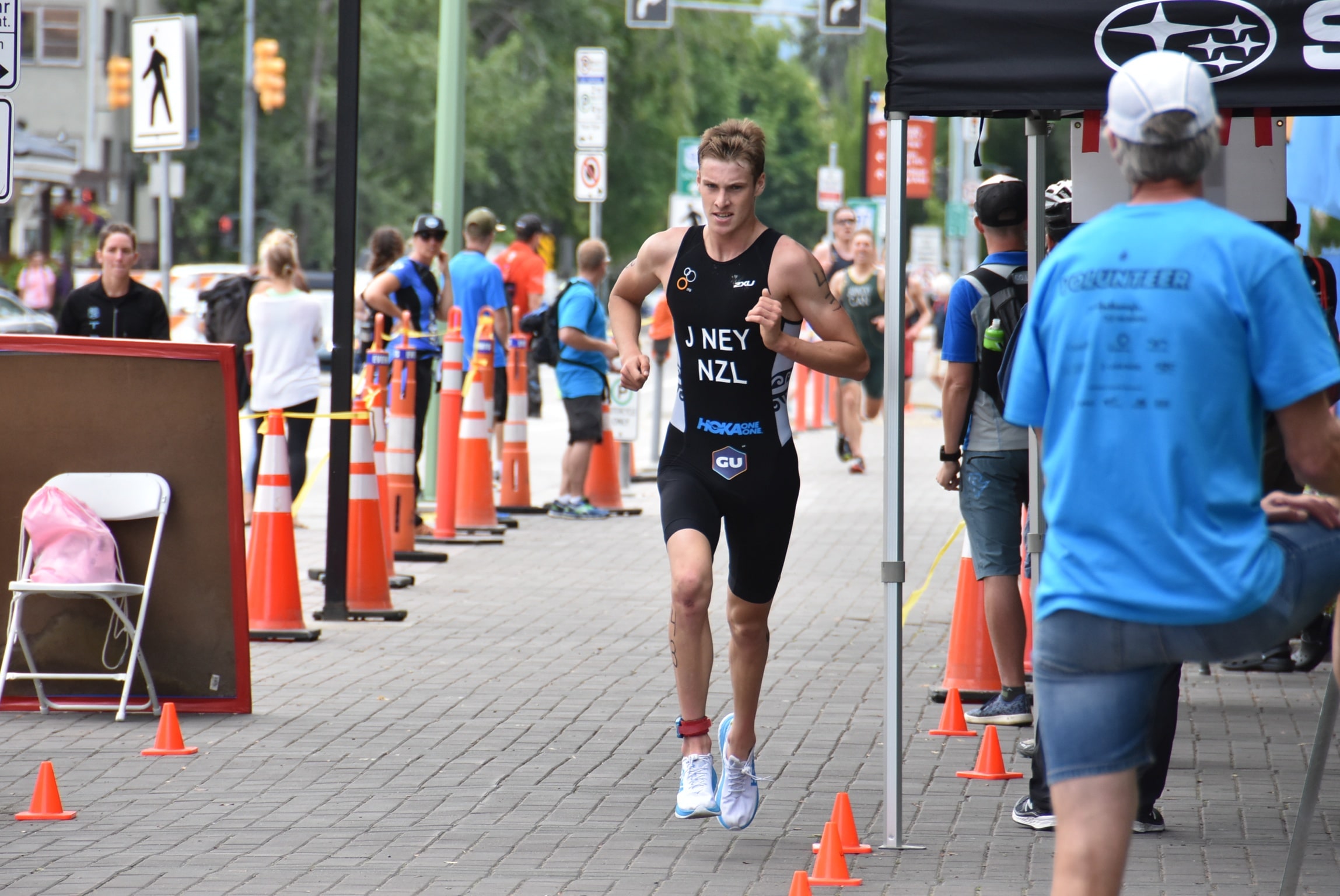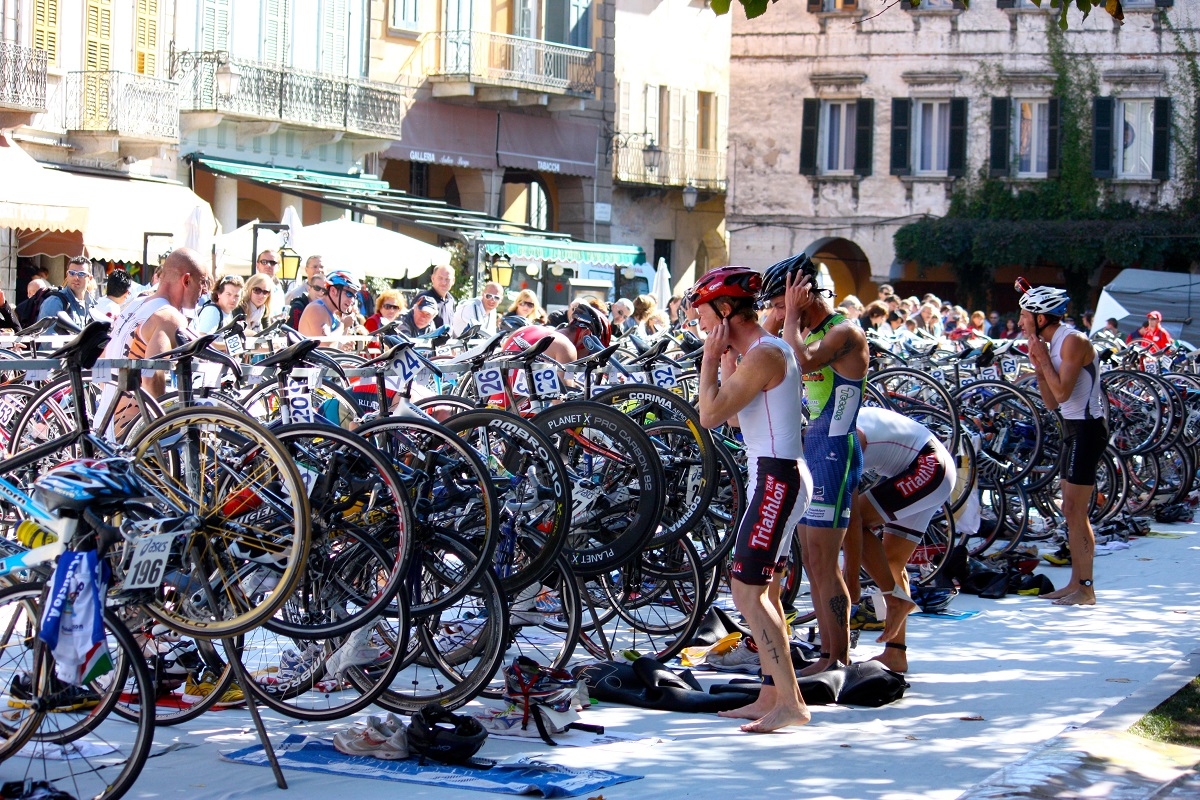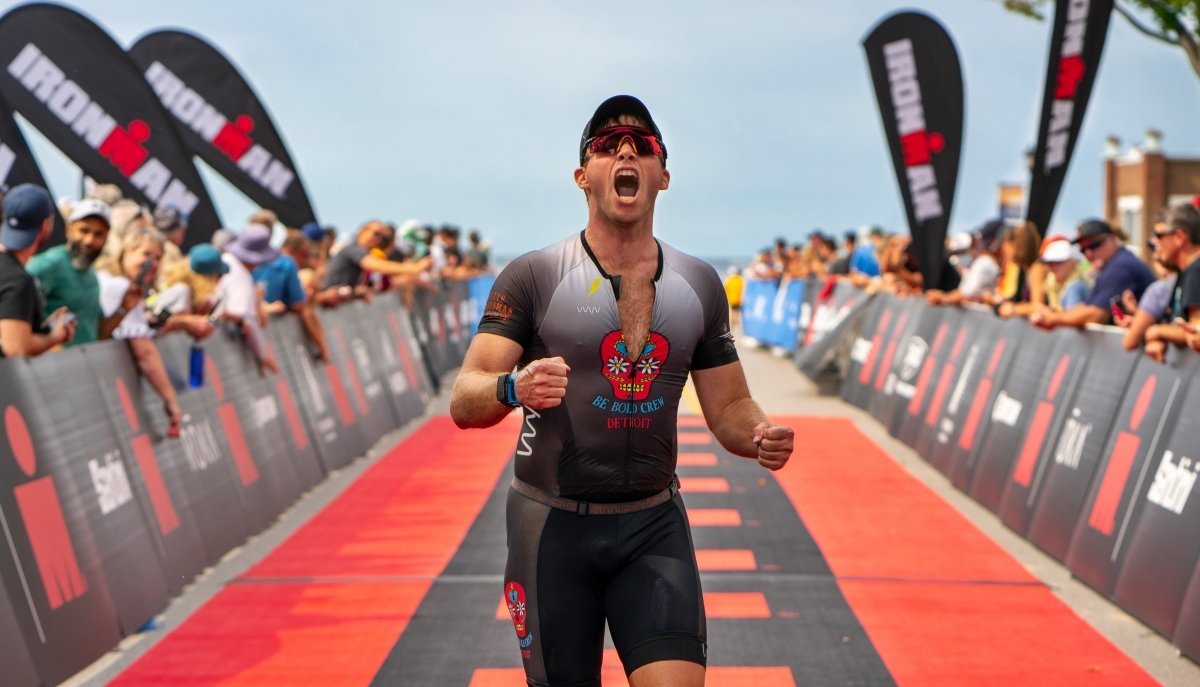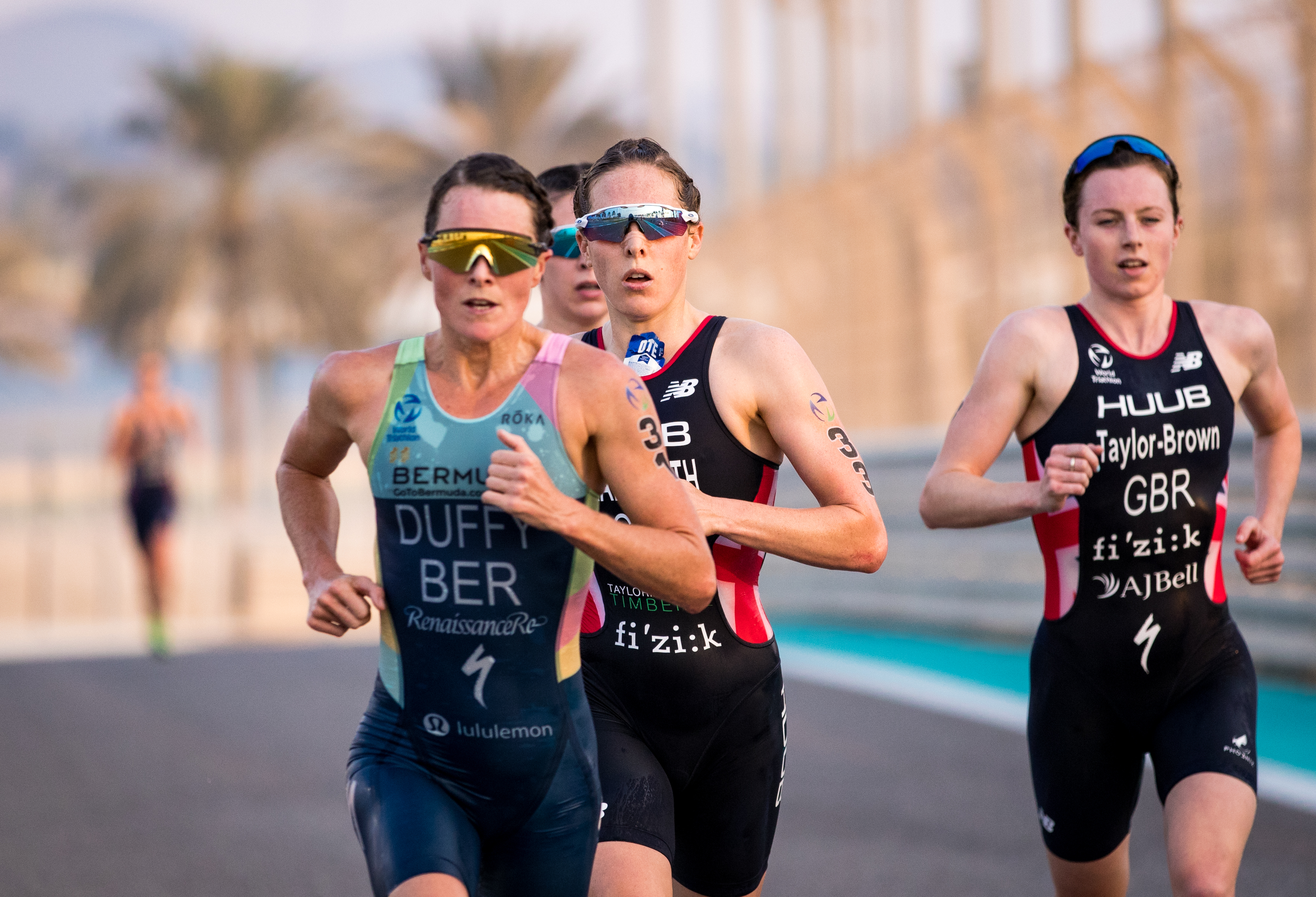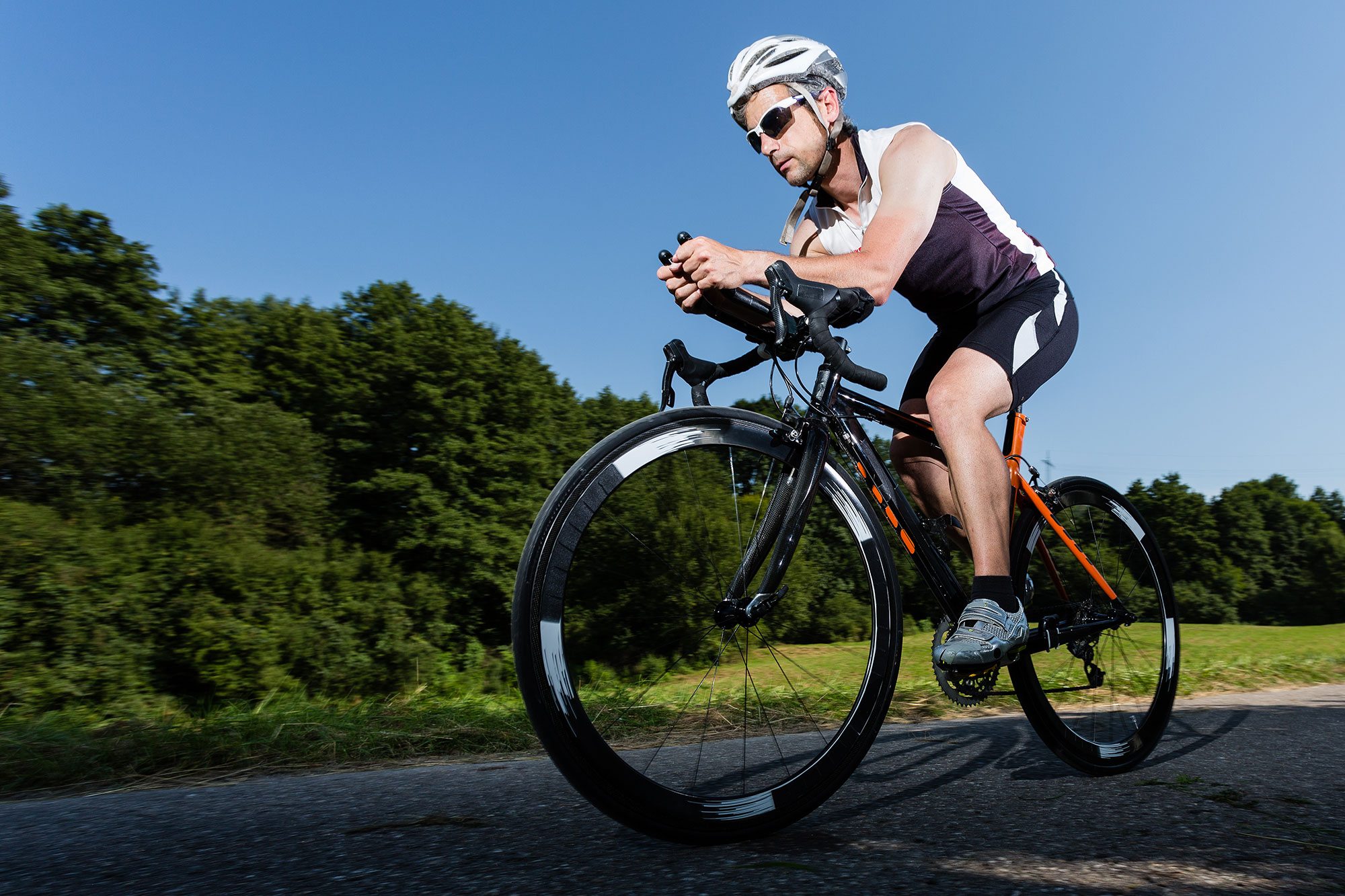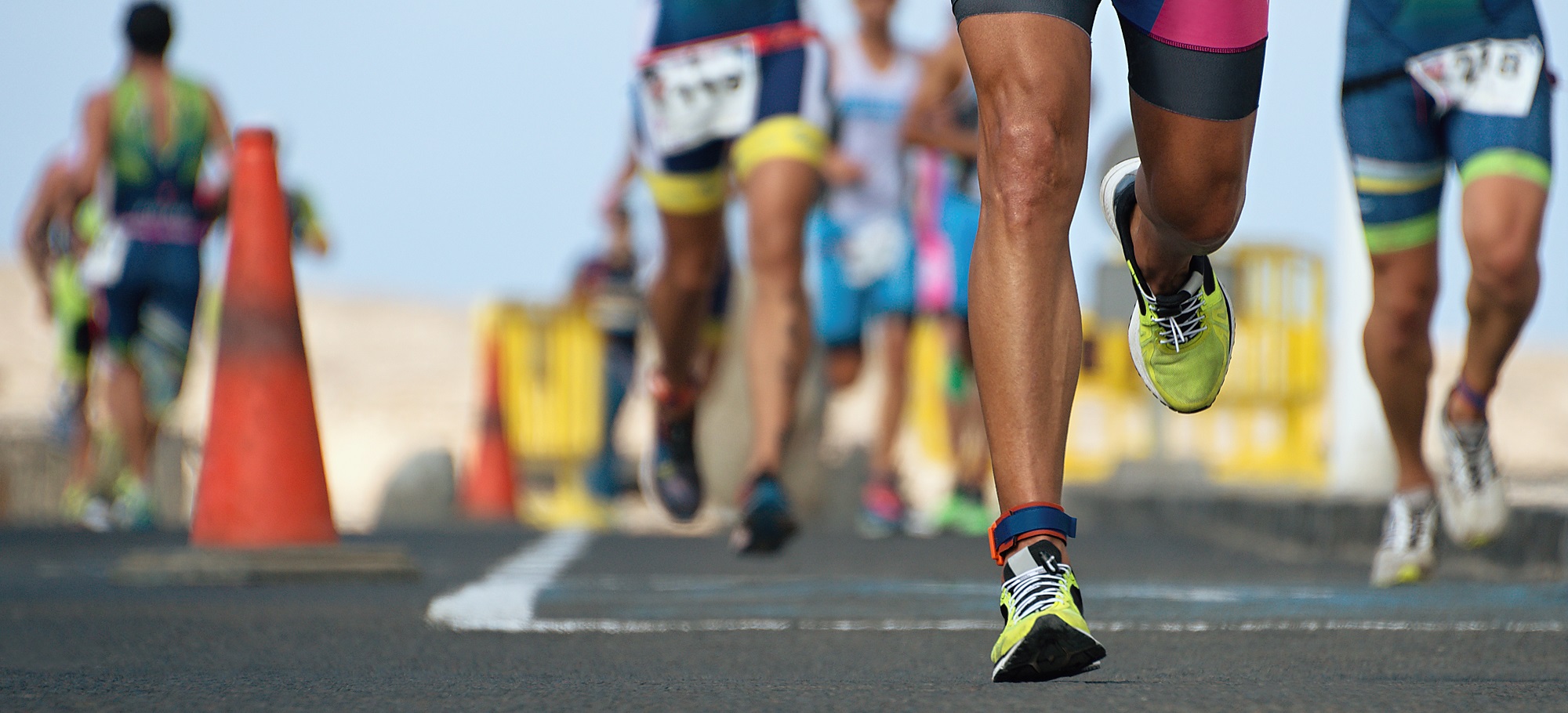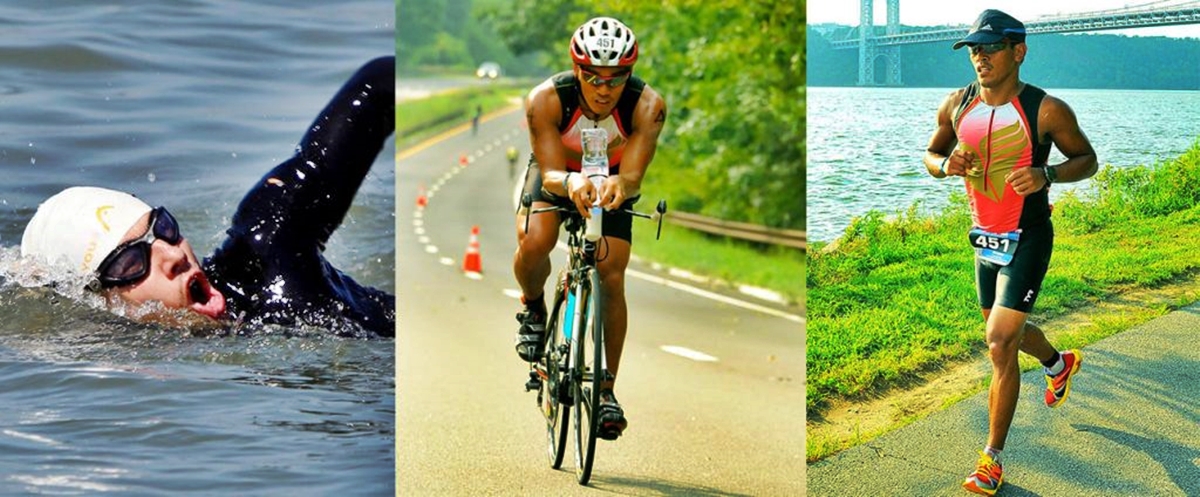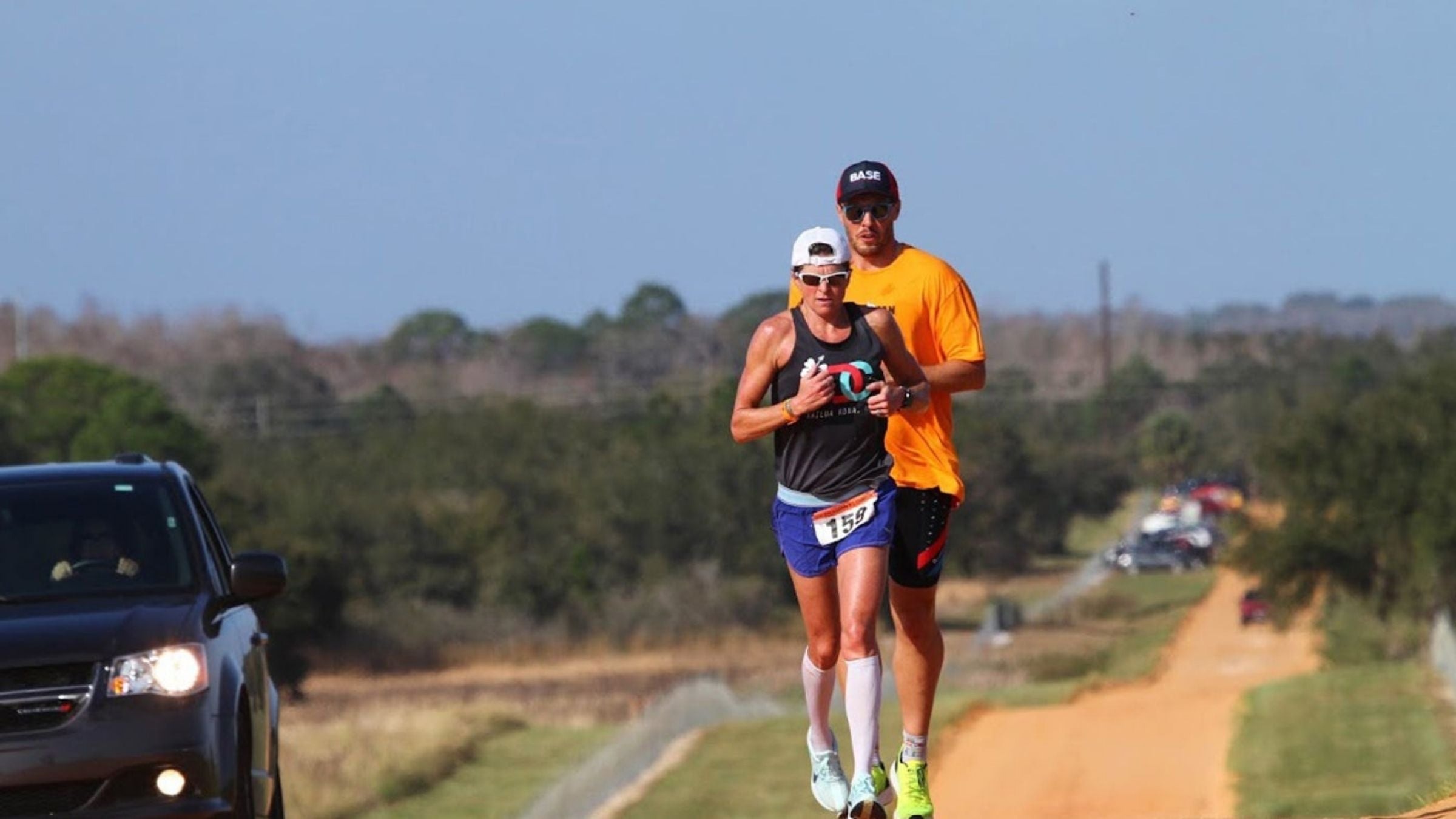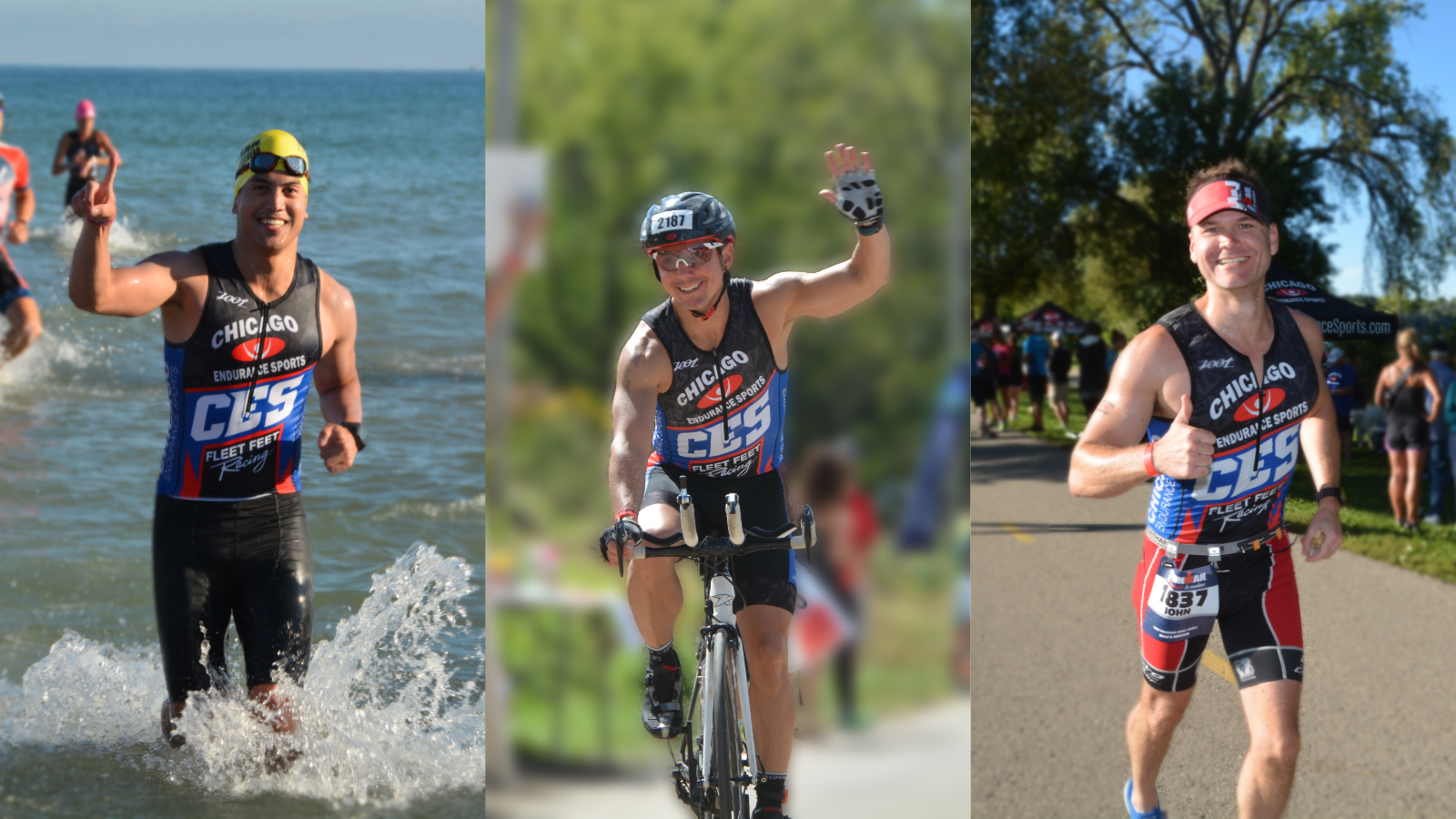

Featured
How To Train For A Half Triathlon
Modified: January 22, 2024
Get ready for your half triathlon with our featured training tips and techniques. Start your journey to race day success with our comprehensive training program.
Introduction
Welcome to the world of half triathlon training! Whether you are a seasoned athlete looking for a new challenge or a beginner ready to embark on your first triathlon journey, this article will provide you with valuable insights on how to train effectively for a half triathlon.
A half triathlon, also known as a middle-distance triathlon, consists of a 1.2-mile swim, a 56-mile bike ride, and a 13.1-mile run. It is a demanding but incredibly rewarding event that pushes your physical and mental limits.
Preparing for a half triathlon requires careful planning and commitment. This article will guide you through the essential steps to prepare for a successful race. From choosing the right race and setting achievable goals to creating a training schedule and incorporating strength workouts, you will gain a comprehensive understanding of what it takes to train for a half triathlon.
Additionally, we will explore swim, bike, and run training tips to help you improve your technique and performance in each discipline. We will also delve into the importance of brick workouts, which involve combining two or more disciplines in a single training session to simulate race conditions.
Proper nutrition and hydration are crucial components of half triathlon training, and we will discuss the best practices to fuel your body for optimal performance. Furthermore, we will provide insights into the mental preparation required to overcome obstacles and stay focused on race day.
By the end of this article, you will be equipped with the knowledge and tools necessary to embark on your half triathlon journey. So, let’s dive in and begin the exciting process of training for a half triathlon!
Choosing the Right Half Triathlon Race
When it comes to selecting a half triathlon race, there are several factors to consider to ensure it aligns with your goals and abilities. Here are some key points to keep in mind:
- Location: Consider the location and travel requirements of the race. Do you prefer a local event or are you willing to travel? Think about the climate and terrain as well, as these factors can greatly impact your race experience.
- Course Difficulty: Research the course profile and difficulty level before committing to a race. Some races may have hilly bike or run segments, while others might take place in open water with challenging swim conditions. Assess your strengths and weaknesses to find a race that suits your abilities.
- Timing: Determine the time of year that works best for your training and schedule. Keep in mind that weather conditions can vary throughout the year, so choose a race during a season that you feel comfortable training and racing in.
- Race Organization: Look into the reputation and organization of the race. Read reviews and testimonials from previous participants to get an idea of the event’s quality, support, and overall experience. A well-organized race can contribute to a smoother and more enjoyable race day.
By considering these factors, you can narrow down your options and find a half triathlon race that suits your preferences and goals. Remember that each race is unique, so take the time to research and make an informed decision.
Once you have chosen a race, it is important to familiarize yourself with the race rules and regulations. Understand the swim course layout, bike course restrictions, and the run route to mentally prepare for what lies ahead. Additionally, check if the race offers aid stations and support throughout the course.
Choosing the right half triathlon race is the first step in your training journey. It sets the foundation for your training plan and motivates you to strive towards your goals. So, take your time, do your research, and select a race that excites and challenges you!
Setting Your Goals
Setting clear and achievable goals is a crucial step when training for a half triathlon. Goals provide focus, motivation, and direction throughout your training journey. Here are some tips to help you set effective goals for your half triathlon:
- Be Specific: Clearly define what you want to achieve in the race. For example, set a goal to complete the swim leg in a certain time, improve your cycling speed, or run the half marathon without walking. The more specific your goals, the easier it becomes to create a targeted training plan.
- Make Them Measurable: Set goals that can be measured, such as completing the race under a certain time or achieving a specific pace per mile. Measurable goals allow you to track your progress throughout your training program.
- Set Realistic Expectations: Consider your current fitness level, experience, and available training time. Be realistic about what you can achieve within the given timeframe. Setting overly ambitious goals can lead to frustration and burnout.
- Establish Short-term and Long-term Goals: Break down your goals into smaller milestones. Focus on short-term goals that can be achieved within a few weeks or months, as well as long-term goals that serve as your ultimate target for race day. Short-term goals keep you motivated and provide a sense of accomplishment along the way.
- Create Process-oriented Goals: Besides performance-based goals, set goals related to the process and consistency of your training. For example, aim to complete a certain number of swim, bike, and run sessions per week, or commit to incorporating strength training and recovery activities into your routine.
- Stay Flexible: Recognize that goals may need to be adjusted throughout your training journey. Factors such as injury, illness, or unforeseen circumstances can impact your progress. Be adaptable and ready to modify your goals if necessary.
Remember, goal setting is a personal process. Each individual has different aspirations, abilities, and motivations. Be honest with yourself and set goals that resonate with your own desires and capabilities.
Having clear goals provides a roadmap for your training and keeps you accountable. Regularly review and reassess your goals to stay on track and adjust as needed. With well-defined goals, you are more likely to stay focused, motivated, and ultimately achieve success in your half triathlon.
Creating a Training Schedule
Creating a well-structured training schedule is essential for preparing and building your fitness for a half triathlon. Here are some key steps to help you develop an effective training plan:
- Assess Your Current Fitness Level: Before diving into training, evaluate your current fitness level in each discipline – swimming, cycling, and running. This will help you gauge where to begin and how to progress throughout your training program.
- Determine Training Frequency: Decide how many days per week you will dedicate to training. Aim for a balanced approach that includes workouts for each discipline, as well as rest and recovery days to prevent overtraining and reduce the risk of injury.
- Plan Your Weekly Training Schedule: Allocate specific days and times for each training session. Consider your personal schedule, work commitments, and other obligations. Be realistic and find a routine that you can consistently follow.
- Gradually Increase Intensity and Volume: Start with manageable training loads and gradually progress week by week. This allows your body to adapt and reduces the risk of injury. Respect the principle of gradual progression in both distance and intensity.
- Include Variety in Workouts: Incorporate different types of workouts to enhance your overall fitness and prevent monotony. Include endurance workouts, speed work, interval training, and recovery sessions. Additionally, incorporate brick workouts that combine two disciplines to simulate race conditions.
- Consider Cross-Training: Incorporate cross-training activities, such as yoga, Pilates, or strength training, to improve overall strength, flexibility, and muscle balance. These activities can also enhance recovery and reduce the risk of overuse injuries.
- Listen to Your Body: Pay attention to your body’s signals and adjust your training schedule accordingly. Rest and recovery are just as important as the training itself. If you feel excessively fatigued or experience pain or discomfort, take a rest day or modify your workouts.
- Periodize Your Training: Divide your training into phases or cycles, with each phase targeting specific aspects of fitness. Build a solid foundation in the early phases, then gradually increase intensity and specificity as race day approaches.
- Track Your Progress: Keep a training log to record your workouts, distances, times, and how you felt during each session. This allows you to monitor your progress, identify patterns, and make any necessary adjustments to your training plan.
Remember, everyone’s training needs are unique. Customize your schedule based on your fitness level, goals, and personal circumstances. Consider consulting with a triathlon coach or trainer to help you create a personalized training plan that suits your specific needs.
Creating a thoughtful and well-structured training schedule sets the groundwork for a successful half triathlon journey. By being consistent, adaptable, and incorporating variety, you will gradually build your fitness and confidence, ultimately preparing yourself for a strong race performance.
Swim Training Tips
The swim leg of a half triathlon can be daunting for many athletes. However, with proper training and technique, you can improve your swimming ability and increase your confidence in the water. Here are some swim training tips to help you prepare for the swim portion of your half triathlon:
- Get Comfortable in the Water: Spend time in the pool before your training begins, especially if you are new to swimming. Familiarize yourself with the water, practice floating, and work on your breathing technique. The more comfortable you are in the water, the easier it will be to focus on improving your swimming skills.
- Focus on Technique: Technique is crucial in swimming. Work on your body positioning, arm entry, and stroke efficiency. Consider taking swimming lessons or working with a swim coach who can provide guidance and help you refine your technique.
- Incorporate Drills: Use swimming drills to isolate specific aspects of your stroke and improve your technique. Examples of drills include kicking with a kickboard, single-arm freestyle, and catch-up drill. These drills help you develop muscle memory and proper swimming mechanics.
- Include Interval Training: Interval training is an effective way to build endurance and speed in the water. Alternate between high-intensity and moderate-intensity swimming intervals during your training sessions. Gradually increase the duration and intensity of your intervals as you progress.
- Practice Open Water Swimming: If possible, incorporate open water swimming sessions into your training. This helps you acclimate to open water conditions, such as waves, currents, and sighting. Look for local open water swim events or find a safe location for open water practice sessions.
- Simulate Race Conditions: Occasionally, incorporate longer swim sessions to simulate race distances. This helps you build endurance and mental resilience for the swim leg. Practice swimming without stopping for extended periods, gradually increasing your distance over time.
- Use Swim Equipment: Incorporate swim equipment, such as swim fins, paddles, and pull buoys, into your training. These tools can help you improve specific aspects of your stroke, build strength, and enhance your overall swimming ability. However, use them sparingly and focus on maintaining good technique.
- Include Open Water Drills: If you have access to open water, practice open water drills such as sighting, swimming in a straight line, and navigating around buoys. These drills help you become more comfortable and confident when faced with the challenges of open water races.
- Don’t Neglect Strength and Flexibility: Incorporate strength and flexibility exercises into your training program to improve your swimming performance. Target areas such as your core, shoulders, back, and hips to enhance your overall swimming efficiency and reduce the risk of swimming-related injuries.
Consistency, patience, and regular practice are key to improving your swimming ability. Be diligent in your swim training and gradually increase both your endurance and speed. With focused training and proper technique, you will become a stronger and more confident swimmer, setting yourself up for a successful half triathlon swim leg.
Bike Training Tips
The bike leg of a half triathlon can be both physically demanding and exhilarating. To prepare yourself for this portion of the race, it is important to focus on bike training and build up your cycling endurance and strength. Here are some bike training tips to help you improve your performance on race day:
- Invest in a Good Bike: Ensure that you have a well-maintained and properly fitted bike that is suitable for triathlon racing. Consider getting a professional bike fit to optimize your comfort and efficiency on the bike.
- Establish a Solid Base: Start your training with longer, steady-paced rides to build your aerobic endurance and adapt your body to spending extended periods on the bike. Gradually increase the duration and intensity of your rides over time.
- Include Interval Training: Incorporate interval training into your bike workouts to improve your speed and power. Alternate between high-intensity efforts and recovery periods during your rides. This will help increase your overall cycling performance.
- Practice Hill Climbing: If your race course includes hills, incorporate hill repeat sessions in your training. Focus on maintaining a steady cadence and proper body positioning while climbing. Hill training will enhance your strength and endurance, preparing you for race day.
- Train in Various Conditions: Prepare yourself for unpredictable weather conditions by training in different weather scenarios. This includes cycling in wind, rain, heat, and cold. Practicing in diverse conditions will make you more resilient and adaptable come race day.
- Incorporate Long Ride Sessions: Periodically include longer rides in your training plan to simulate the distance of the bike leg. Gradually increase your mileage over time to build your endurance and mental fortitude.
- Focus on Cadence: Pay attention to your pedaling cadence and aim to maintain a steady rhythm throughout your rides. Practice spinning at higher cadences to improve your efficiency and reduce strain on your legs.
- Practice Transitions: Perform brick workouts, where you transition directly from the bike to the run. This will help your body adapt to the sensation of running off the bike and improve your overall race-day performance.
- Emphasize Bike Handling Skills: Work on your bike handling skills, such as cornering, bike control, and riding in a group if applicable. Practicing these skills will make you more confident and safer during the race.
- Take Care of Your Bike: Regularly maintain and service your bike to ensure it’s in optimal condition for training and racing. Keep your tires properly inflated, lubricate the chain, and check your brakes regularly.
Remember to prioritize your safety during bike training. Always wear a helmet, follow traffic rules, and choose safe cycling routes. Consider joining a local cycling group or club to train with others and gain valuable cycling insights and camaraderie.
By incorporating these bike training tips into your training regimen, you will build your cycling fitness, improve your endurance, and be well-prepared for the bike leg of your half triathlon.
Run Training Tips
The run leg of a half triathlon is often the final and most mentally challenging part of the race. To excel in this segment, you need to focus on your running training and develop endurance, speed, and mental resilience. Here are some run training tips to help you prepare for the run portion of your half triathlon:
- Establish a Running Base: Prioritize building your running endurance by incorporating longer, slower-paced runs into your training. Gradually increase the distance and duration of your runs over time to develop a solid foundation.
- Incorporate Interval Training: Integrate interval training into your running workouts to improve your speed and cardiovascular fitness. Include speed intervals and tempo runs to challenge your pace and enhance your running performance.
- Practice Brick Workouts: Incorporate brick workouts into your training plan, where you transition directly from the bike to the run. This simulates race conditions and familiarizes your body with the sensation of running off the bike.
- Include Hill Training: Incorporate hill repeats and hill running sessions into your training to develop strength, power, and mental toughness. Running uphill helps build leg strength and prepares you for any inclines on the race course.
- Focus on Form and Technique: Pay attention to your running form and technique. Maintain an upright posture, engage your core, and land mid-foot with each stride. Consider working with a running coach or joining a running clinic to improve your running mechanics.
- Gradually Increase Mileage: Gradually increase your weekly mileage to build your running endurance. Avoid sudden increases as this can lead to overuse injuries. Listen to your body and allow for proper recovery between runs.
- Include Rest Days: Schedule rest days to allow your body to recover and prevent overtraining. Rest is just as important as training and allows for adaptation and performance improvement.
- Wear Proper Running Shoes: Invest in a good pair of running shoes that provide the right amount of support and cushioning for your feet. Get properly fitted at a running specialty store to ensure your shoes match your gait and running style.
- Stay Hydrated and Fuel Properly: Proper hydration and nutrition are vital for long-distance running. Drink plenty of water before, during, and after your runs, and consider incorporating energy gels or sports drinks for longer training sessions.
- Track Your Progress: Keep a training log to record your runs, distances, times, and how you felt during each session. This allows you to monitor your progress, identify patterns, and make any necessary adjustments to your training plan.
Remember to listen to your body, prioritize rest and recovery, and avoid pushing yourself too hard too soon. Gradual progression and consistency are key to improving your running performance.
By incorporating these run training tips into your training routine, you will build your running endurance, improve your speed, and develop the mental resilience necessary for a strong run leg in your half triathlon.
Incorporating Brick Workouts
Brick workouts are an essential component of half triathlon training as they help you adapt to the unique challenge of transitioning from one discipline to another. By combining two different disciplines, typically the bike and run segments, you can simulate the physical and mental demands of race day. Here’s how you can effectively incorporate brick workouts into your training:
- Schedule Regular Brick Sessions: Plan brick workouts at least once a week, preferably on days when you have both bike and run sessions scheduled. This allows your body to adapt to the transition from cycling to running.
- Start with Short Distances: Begin with shorter distances for your brick workouts, gradually increasing the duration and intensity as your training progresses. This allows your body to acclimate to the strain of transitioning between disciplines.
- Focus on Smooth Transition: During your brick workouts, practice transitioning quickly and efficiently from the bike to the run. Set up a designated transition area and practice removing your helmet, changing shoes, and mentally preparing for the run.
- Gradually Increase Intensity: As you become more comfortable with the bike-to-run transition, incorporate higher intensities into your brick workouts. This might involve riding at a faster pace or adding hill repeats to mimic race day conditions.
- Include Race Pace Efforts: Incorporate segments of your brick workouts at your goal race pace. This helps familiarize your body with the effort required during the race and prepares your mind for maintaining a strong pace even after the cycling leg.
- Simulate Race Conditions: For longer brick workouts, consider replicating race conditions by practicing nutrition and hydration strategies. This allows you to fine-tune your fueling plan and test how your body responds during the demanding race day.
- Train Your Mind: Brick workouts not only test your physical endurance but also build mental resilience. Embrace the discomfort and challenge yourself to stay focused and motivated during the run portion. Mental strength plays a significant role in a successful brick workout as well as on race day.
- Listen to Your Body: Pay attention to any signs of fatigue or overtraining during your brick workouts. If you feel excessively fatigued or experience pain, allow yourself extra rest and recovery. Adjust the intensity or duration of your brick sessions if needed.
Remember to gradually progress your brick workouts, adapting them to your fitness level and race goals. Additionally, always prioritize safety during your brick sessions. Practice proper bike handling skills, warm up before intense efforts, and be mindful of traffic and road conditions.
Incorporating regular brick workouts into your training routine will enhance your ability to perform well during the run leg of your half triathlon. By simulating race day conditions and fine-tuning the transition between disciplines, you’ll improve your overall race performance and gain confidence in your ability to conquer the challenges of a half triathlon.
Strength Training for Half Triathlon
Incorporating strength training into your half triathlon training program is key to enhancing overall performance, reducing the risk of injuries, and improving muscular endurance. Here are some important considerations and tips for incorporating strength training into your half triathlon preparation:
- Focus on Muscular Balance: When designing your strength training program, prioritize exercises that target both your major muscle groups and smaller stabilizing muscles. This helps improve balance and coordination, reducing the risk of imbalances or injuries.
- Build Core Strength: A strong core is essential for maintaining proper form and technique throughout all three disciplines. Incorporate exercises like planks, Russian twists, and stability ball exercises to target your core muscles.
- Include Functional Movements: Opt for exercises that mimic the movements you perform during swimming, cycling, and running. Examples include lunges, squats, step-ups, and single-leg deadlifts. These exercises improve strength and stability in a way that directly translates to better performance during your races.
- Don’t Neglect Upper Body Strength: Although swimming is the primary discipline where upper body strength is important, having a strong upper body also helps with bike handling, stability, and overall fatigue resistance. Incorporate exercises like push-ups, pull-ups, and overhead presses to target your arms, shoulders, and back.
- Include Plyometrics: Plyometric exercises, such as box jumps, split jumps, and medicine ball throws, can help improve your power and explosiveness. They train your muscles to generate force quickly, which can benefit your sprinting ability and overall performance.
- Perform Strength Training Regularly: Aim to include two to three strength training sessions per week in your training program. Set aside dedicated sessions specifically for strength training and allow your body adequate time to recover between sessions.
- Begin with Lighter Weights: If you are new to strength training, start with lighter weights or bodyweight exercises to focus on proper form and technique. Gradually progress to heavier weights as your strength and confidence improve.
- Prioritize Recovery: Just like any other training activity, strength training places stress on your muscles. Ensure you prioritize recovery by incorporating rest days and active recovery exercises into your routine. This allows your muscles to repair and grow stronger.
- Consider Working with a Trainer: Consulting with a qualified strength and conditioning professional or a triathlon coach can be beneficial, especially if you’re new to strength training. They can help design an individualized program tailored to your specific needs and monitor your progress.
- Don’t Overdo It: Balance is key when it comes to strength training. Avoid excessive volume or intensity that could lead to overtraining or interfere with your swim, bike, and run workouts. Remember that your primary focus is on your triathlon disciplines.
By incorporating strength training into your half triathlon training program, you will improve your overall performance, reduce the risk of injuries, and enhance your muscular endurance. With consistency, proper technique, and a balanced approach, you’ll develop a strong and resilient body capable of conquering the challenges of a half triathlon.
Nutrition and Hydration
Proper nutrition and hydration play a vital role in your performance and overall experience during a half triathlon. The right fuel can optimize your energy levels, enhance endurance, and aid in recovery. Here are some key considerations for nutrition and hydration during your half triathlon training:
- Focus on Balanced Nutrition: Aim for a well-balanced diet that includes a variety of nutrient-dense foods. Incorporate lean protein sources, whole grains, fruits, vegetables, and healthy fats into your meals to meet your body’s nutritional needs.
- Timing is Key: Plan your meals and snacks strategically around your training schedule. Before a workout, opt for easily digestible carbohydrates to fuel your session. After a workout, prioritize protein and carbohydrates for optimal muscle recovery.
- Hydrate Adequately: Hydration is critical for performance and overall well-being. Drink water throughout the day, especially during training sessions. Hydration needs vary depending on factors like sweat rate, weather conditions, and intensity of training, so monitor your hydration and adjust accordingly.
- Electrolytes: During longer training sessions and races, consider electrolyte supplementation to replace the sodium, potassium, and other electrolytes lost through sweat. Sports drinks or electrolyte tabs can help maintain proper hydration and prevent cramping.
- Practice Nutrition during Training: Train your gut by practicing your race day nutrition during your longer training sessions. Experiment with different types of energy gels, bars, and fluids to find what works best for you in terms of taste, digestibility, and performance.
- Avoid Caffeine and Experiment: Caffeine can provide a performance boost for some athletes, but it’s important to experiment and determine how it affects you personally. Try caffeine-containing products during your training to gauge your tolerance and potential benefits.
- Avoid Experimenting on Race Day: Never try out new foods, drinks, or supplements on race day. Stick to what has worked during your training and what your body is accustomed to. This will help prevent gastrointestinal issues or discomfort during the race.
- Recovery Nutrition: After training sessions, prioritize post-workout nutrition to replenish glycogen stores and support muscle recovery. Include a mix of protein and carbohydrates within 30-60 minutes after exercise to optimize recovery.
- Pre-Race Nutrition: Plan your pre-race meal carefully, ensuring it’s familiar, easy to digest, and provides a balance of carbohydrates, protein, and healthy fats. Eat this meal 2-3 hours before the race to allow for digestion.
- Hydration and Fueling during Race: During the race, consume fluids and electrolytes regularly to maintain hydration. Practice your race nutrition strategy during training to find the right balance of fueling without overloading your stomach.
- Listen to Your Body: Everyone has different nutritional needs, so pay attention to how your body responds to different foods and fluids during training. Adjust your nutrition plan accordingly to optimize performance and avoid any gastrointestinal issues.
Remember, a well-planned nutrition and hydration strategy is key to performing your best during a half triathlon. Experimentation, practice, and listening to your body will help you develop a personalized plan that supports your energy needs and enhances your overall race-day experience.
Mental Preparation
While physical training is crucial, mental preparation is equally important when it comes to competing in a half triathlon. A strong and focused mindset can help you push through challenges, maintain motivation, and perform at your best on race day. Here are some tips to help you develop mental fortitude and prepare mentally for your half triathlon:
- Visualize Success: Take time to visualize yourself crossing the finish line, achieving your goals, and experiencing the satisfaction and joy of completing the race. Visualizing success can boost your confidence and motivation, making it easier to push through difficult moments.
- Set Realistic Expectations: While setting goals is important, it’s essential to set realistic expectations for yourself. Recognize that it’s normal to face challenges during the race, and not every aspect will go perfectly. Embrace the journey and focus on giving your best effort.
- Practice Positive Self-Talk: Monitor your internal dialogue and replace negative or self-doubting thoughts with positive affirmations. Remind yourself of your capabilities, strengths, and training accomplishments. Encourage yourself during challenging moments to stay focused and motivated.
- Break the Race into Smaller Goals: Rather than solely focusing on the finish line, break the race down into smaller, manageable goals. This could be reaching a specific mile marker, completing a challenging hill, or maintaining a certain pace. Celebrate each milestone to keep your motivation high.
- Develop Coping Strategies: Identify potential stressors or obstacles that you may encounter during the race and develop strategies to cope with them. This could include deep breathing exercises, focusing on form and technique during challenging moments, or mentally reciting a mantra to stay focused and calm.
- Practice Mindfulness: Incorporate mindfulness techniques into your training and daily life to enhance your ability to stay present and focused. Engage in activities such as meditation, deep breathing, or body scan exercises to cultivate a calm and centered mindset.
- Cultivate Mental Toughness: Building mental toughness is a gradual process. Push yourself during training sessions, embrace discomfort, and expose yourself to challenging conditions. By consistently pushing your boundaries, you’ll develop resilience and mental strength.
- Recall Past Successes: Reflect on past races or challenging training sessions where you overcame obstacles and achieved success. Remind yourself of your strength and resilience, knowing that you’ve conquered challenges before and can do it again.
- Have a Race-Day Plan: Create a detailed race-day plan outlining logistics, nutrition, hydration, and pacing strategies. Having a plan in place can help alleviate stress and allow you to focus more on the race itself.
- Embrace the Journey: Remember that the half triathlon is not just about race day but also the training process. Embrace the journey, enjoy the small victories, and appreciate the growth you experience along the way. This perspective helps maintain a positive mindset and enjoyment throughout the entire experience.
Preparing mentally for a half triathlon is just as important as physical training. By incorporating these strategies into your preparation, you’ll develop mental resilience, positivity, and focus, ultimately enhancing your performance and maximizing your race-day experience.
Preparing for Race Day
Race day for a half triathlon is a culmination of your training and preparation. To ensure a smooth and successful race experience, it’s important to make the necessary preparations leading up to the event. Here are some essential tips to help you prepare for race day:
- Review the Race Course: Familiarize yourself with the race course map, elevation profile, and any specific rules or regulations. Understand the transition areas, aid stations, and any notable landmarks or turns on the course.
- Have a Race-Day Checklist: Create a comprehensive checklist of all the items you’ll need on race day, including your race bib, timing chip, wetsuit (if applicable), helmet, cycling shoes, running shoes, nutrition, hydration, and any other necessary gear. Check off each item as you pack it to ensure nothing is forgotten.
- Prepare Your Gear: Lay out all your gear the night before the race, including your triathlon apparel, swim cap, goggles, bike, and helmet. Ensure that your bike is properly tuned, tires are inflated, and all components are in working order.
- Plan Your Nutrition: Have a pre-race meal planned that is familiar, easy to digest, and provides adequate energy. Eat this meal 2-3 hours before the race. Also, prepare small snacks or energy gels to fuel during the race according to your nutrition plan.
- Adequate Rest: Get a good night’s sleep two nights before the race. It’s common to feel pre-race jitters and not sleep as well the night before, so prioritizing quality rest earlier in the week is essential.
- Arrive Early: Plan to arrive at the race venue with plenty of time before the start. This allows for a stress-free transition setup, warm-up routines, last-minute bathroom breaks, and time to get mentally focused.
- Warm-Up Routine: Design and follow a warm-up routine that includes dynamic stretching, light jogging, and swim drills. This primes your body for the race effort and helps prevent injuries.
- Transition Setup: Set up your transition area with all the necessary equipment. Visualize the flow of the transition and mentally rehearse the steps you’ll take from swim-to-bike and bike-to-run. Familiarize yourself with the entry and exit points.
- Stay Hydrated: Start hydrating early in the morning and continue to drink fluids leading up to the race. Sip water consistently to stay hydrated, but avoid excessive consumption, which may lead to discomfort.
- Stay Calm and Focused: Manage any pre-race nerves or anxiety with deep breathing exercises, positive self-talk, and mental visualization. Remind yourself of the hard work you put in during training and have confidence in your abilities.
- Follow Your Race Plan: Stick to your race plan that you created during your training. Pace yourself accordingly, follow your nutrition and hydration strategy, and stay focused on executing your plan rather than getting caught up in the race-day excitement.
- Enjoy the Experience: Remember to embrace the race day experience and have fun! Triathlons are a celebration of athleticism and personal achievement. Cheer on your fellow athletes, smile, and acknowledge your accomplishments as you cross the finish line.
By effectively preparing for race day, you’ll set yourself up for a successful and enjoyable half triathlon experience. Take the time to plan, organize, and mentally prepare so that you can focus on giving your best effort and savoring the incredible sense of accomplishment that comes with completing a half triathlon.
Conclusion
Congratulations on completing this comprehensive guide to training for a half triathlon! By following the tips and strategies outlined in this article, you are well-equipped to embark on your half triathlon journey with confidence and determination. From choosing the right race and setting goals to incorporating swim, bike, and run training, along with strength training, nutrition, hydration, mental preparation, and race day readiness, you have gained a holistic understanding of what it takes to succeed in a half triathlon.
Remember, each step of the journey is important, from the early stages of training to the final moments of crossing the finish line. Stay consistent, remain focused, and trust in your training. Embrace the challenges along the way and enjoy every milestone achieved during your triathlon preparation.
As you move forward in your training, continue to listen to your body, adapt your workouts, and prioritize rest and recovery. Seek support from fellow triathletes, friends, and family who can provide guidance and motivation throughout your journey.
Training for and participating in a half triathlon is a remarkable accomplishment that will test your physical abilities, mental fortitude, and overall resilience. Remember to celebrate your progress and enjoy the incredible experience of competing in a race that pushes you beyond your limits. Be proud of yourself for taking on this challenge.
Now, it’s time to lace up your shoes, jump in the pool, and hit the road. Train with determination, race with passion, and relish the journey towards becoming a half triathlon finisher!
